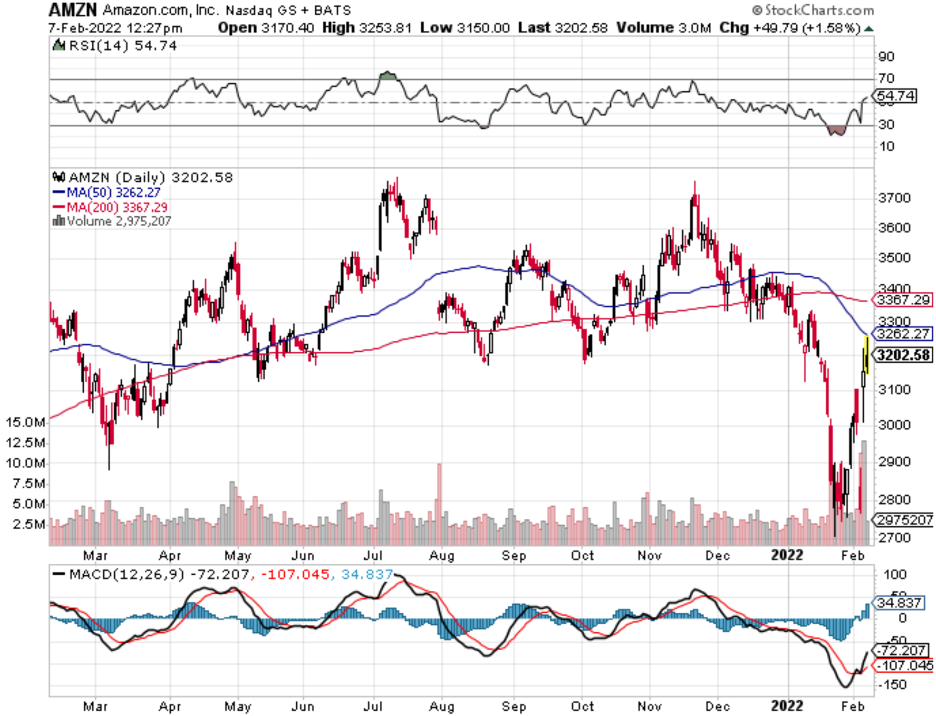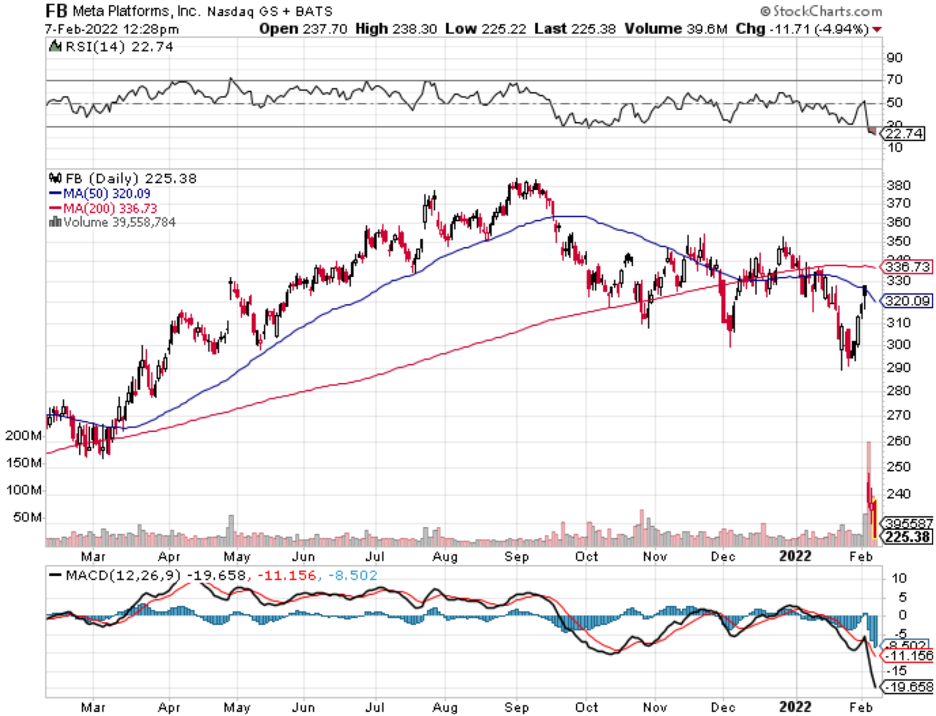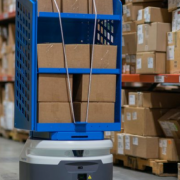Ecommerce had to cool off, didn’t it?
After 2 years of breakneck growth, Amazon (AMZN) came crashing back down to life reporting its slowest revenue growth in 4 years.
Amazon’s online stores reported $206 million in losses for the U.S. revealing that American online shopping has plateaued for the short-term.
Much of this was baked into the equation as Amazon shares have really done nothing for the past 6 months.
The sugar high it received from the pandemic is starting to wear off.
AMZN experienced more than $4 billion in costs from inflationary pressures, lost productivity, and disruptions. The inflation primarily relates to wage increases and incentives in the operations, as well as higher pricing from third-party carriers supporting AMZNs fulfillment network. Lost productivity and network disruptions were driven primarily by labor capacity constraints due to challenges in staffing up AMZN facilities.
Then when the omicron variant reared its ugly head, there was a certain conflict with retaining staff as many workers called out sick, making an already tight labor force less efficient.
If the earnings report stopped just there, no doubt AMZN would have braced for a Facebook-like 25% selloff, but the silver linings in the AMZN report were more like a gold lining.
Three positive data points that couldn’t be downplayed were in the Amazon Web Services (AWS) business, the advertising business, and pricing for Amazon Prime membership.
AWS delivered a strong quarter of growth, as enterprises and developers continued to look to AWS for critical, innovative cloud solutions.
A vivid example of AWS is with Amazon’s relationship with parent company of Chrysler, Dodge, Fiat, Jeep, and Ram.
They selected AWS as its preferred global cloud provider for vehicle platforms to accelerate new digital products and upskill its global workforce.
There’s a whole list of the world's largest companies that now use AWS like Adidas, Goldman Sachs, Pfizer, Rivian.
AWS revenue expanded to 40% from a year ago to $17.8 billion, and represents the anchor for the financial health of Amazon.
It allows AMZN to pursue other growth levers like advertising.
What happens is that there is an intense feedback loop with customers, to keep building and making that better.
The end result is building more relevancy and better engaging experiences.
Interaction promotes an understanding that AMZN can build better analytic tools, provide better measurement, give them better insight to performance.
Amazon’s focus on serving brands has really differentiated themselves from the likes of Facebook (FB) and Google (GOOGL).
The sponsored ad space with regards to video advertising is certainly a great opportunity.
And again, this is about delivering good recommendations to customers and helpful when they're making their purchase decisions and giving them information around that.
In the end, advertising grew 32% year over year and is a $10 billion business.
The most aggressive move that Amazon told us about is their price rise for Prime Membership.
Amazon will increase the price of a Prime membership in the United States, with the monthly price going from $12.99 to $14.99 and the annual membership going from $119 to $139.
The 15% increase is the first price increase since 2018 which should be a boon to the bottom line.
Ultimately, I believe the Amazon Prime Membership price hike was the reason for the investor response of bidding up AMZN shares.
Although the ecommerce numbers were a little disappointing, they should rebound nicely in 2022.
The bar was set extremely low coming into the earnings and AMZN gave us enough juice for shares to surge.
When combining the positives of AWS and advertising strength, this ecommerce behemoth’s momentum is just too hard to ignore.
If inflation starts to moderate, expect AMZN’s stock to be 25% higher by the end of the year and I do believe investors will sell out of Facebook and buy into a quality stock like AMZN.





